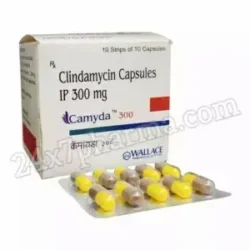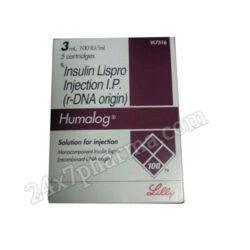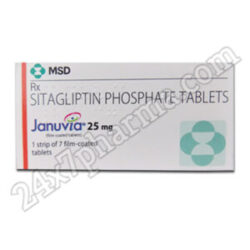Introduction to Cidiglim M2 Tablet
Cidiglim M2 Tablet is a combination medication comprising Glimepiride and Metformin, classified as Antidiabetic agents. It is primarily prescribed for managing type 2 diabetes mellitus when diet, exercise, and single-agent therapy do not sufficiently control blood sugar levels.
Medicinal Benefits of Cidiglim M2 Tablet
Cidiglim-M 2 Tablet harnesses Glimepiride and Metformin to effectively treat type 2 diabetes. Glimepiride stimulates insulin production in the pancreas and enhances insulin utilization in the body. Metformin reduces sugar release from the liver, slows sugar absorption in the intestines, and improves muscle cell sensitivity to insulin.
How does it work?
Cidiglim M2 Tablet regulates blood glucose levels through two main mechanisms: Glimepiride prompts the pancreas to release more insulin, thereby lowering blood glucose, while Metformin reduces liver glucose production, delays intestinal glucose absorption, and increases insulin sensitivity in the body.
How to Take Cidiglim M2 Tablet?
Follow your physician’s instructions for Cidiglim M2 Tablet dosage. Swallow the tablet whole with water, and do not crush or chew it. Dosage and duration will vary based on age, weight, and medical condition. Do not discontinue without consulting your doctor.
Overdosage and Safety
In case of overdosage symptoms such as low blood sugar or potential lactic acidosis (characterized by symptoms like vomiting, muscle cramps, and difficulty breathing), seek immediate medical help or go to the nearest hospital.
Side Effects
Common side effects of Cidiglim M2 Tablet include taste disturbances, nausea, diarrhea, vomiting, stomach pain, and loss of appetite. Rare side effects may include low blood sugar levels, skin reactions, and decreased vitamin B12 levels.
Alternative Medicines of Cidiglim M2 Tablet
Cidiglim M2 has a various alternative medicines including Glimepiride and Metformin ingredients such as:
- Azulix MF 3mg Tablet
- Apriglim MV 1 Tablet
- Bepride SF Tablet
- Coravog GM 2 Tablet
- Azulix MF Forte 4mg Tablet
- Blisto 2Mf Tablet
Your doctor will decided the best medicine for you based on your health and severe condition.
You can discover these tablets at our cheap online pharmacy known as 24×7 Pharma. Browse our range of medications for best deals and shipping benefits.
Storage Instructions
Store medicine below 25°C, out of children’s reach.
FAQs About Cidiglim M2 Tablet
What is the difference between type 1 and type 2 diabetes?
Type 1 diabetes results from the pancreas not producing insulin, while type 2 diabetes involves the body becoming resistant to insulin despite its production.
Can I drive or operate machinery after taking Cidiglim M2 ?
Avoid driving or using machinery if you experience symptoms of low or high blood sugar or have vision issues due to fluctuating blood sugar levels. Consult your doctor before use.
Is Cidiglim M2 safe for patients with kidney problems?
It’s not recommended for severe kidney disease. Caution is advised in other cases, with dosage adjustments based on kidney function.
Can I drink alcohol while taking Cidiglim M2 ?
Avoid alcohol consumption as it can affect blood sugar levels and increase the risk of lactic acidosis. Consult your doctor for guidance.
Can I take Cidiglim-M 2 Tablet with phenytoin?
Avoid combining these medications as it may reduce the effectiveness of Cidiglim-M 2 Tablet. Consult your doctor before taking with other medicines.
Does Cidiglim-M 2 Tablet cause low blood sugar levels?
Yes, especially with alcohol intake, increased exercise, or delayed meals. Consult a doctor if you experience symptoms of low blood sugar.
By rephrasing and restructuring the content, the information remains informative and clear while ensuring it is distinct and understandable.
References:
- Glimepiride and Metformin Combinations in Diabetes Comorbidities and Complications: Real-World Evidence
By Rakesh Kumar Sahay, Vinod Mittal, G Raja Gopal, Sunil Kota, Ghanshyam Goyal, Mahesh Abhyankar, and Santosh Revenkar
Published online 2020 Sep 28. doi: 10.7759/cureus.10700
https://www.ncbi.nlm.nih.gov/pmc/articles/PMC7594657/










Reviews
Clear filtersThere are no reviews yet.